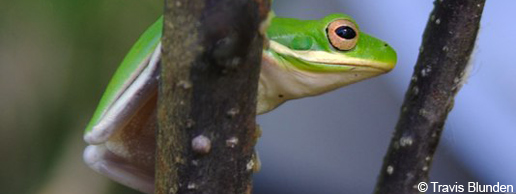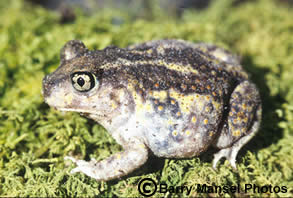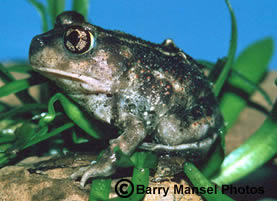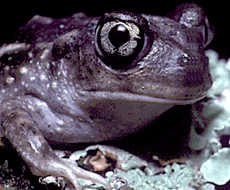
Spadefoot Toad
Scaphiopus holbrooki holbrooki



Description: Spadefoot toads are so named for a single, sharp edged, black spade that occurs on each of the hind feet. This feature enables the amphibian to burrow vertically into sandy or loose soils. Unlike true toads (Bufo spp.) which have well-developed warts and horizontal pupils, spadefoot toads have vertical pupils and no warts. Its spade is elongated and sickle shaped. Its body color is grayish or blackish brown. Two yellow lines occur in a lyre-shaped pattern and originate at the eye. An additionally light line may occur on each side of its body.
Distribution: The Eastern Spadefoot Toad is the only spadefoot occurring east of the Mississippi River.
Habitat: Habitats for the spadefoot toad include marshes and mixed hardwood swamps.
Special Note: Many people have allergic reactions to the secretion from the paratoid glands of Spadefoot Toads, which can be similar or more severe than reactions that occur from handling the Bufo toads.
Call: Its call is short and low pitched, and is said by some to resemble that of a crow.
Click HERE to listen to the call of the Spadefoot Toad.
(A new browser window will open with the sound file)
Development of these pages was a cooperative effort. Photos were supplied by Barry Mansell Photos and calls were provided by Paul Moler, state herpetologist for the Florida Fish and Wildlife Conservation Commission.


 Location: http://yourdomain.edu
Location: http://yourdomain.edu